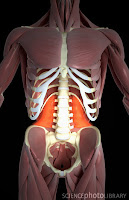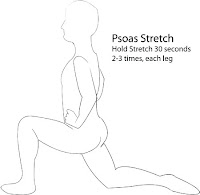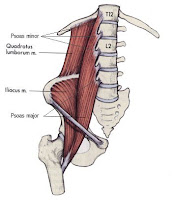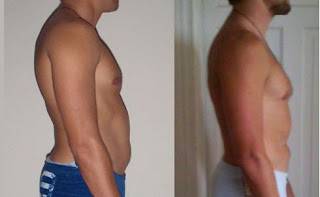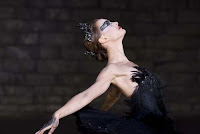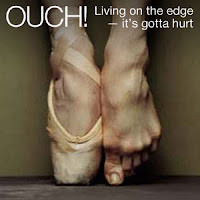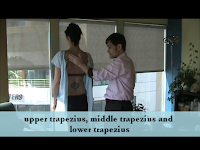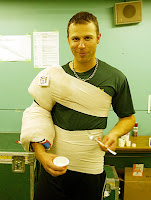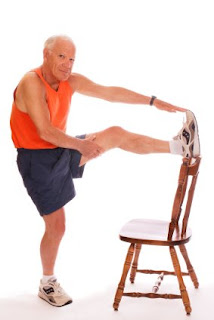 |
| No, no, no, no NO! All wrong–watch the vid below |
So I’ve now given you two great hamstring stretches–one that is the most basic, and where I would recommend everybody to start. Remember, it’s using a wall to brace yourself as you bend forward. Why do you need the object on which to brace? Simple…maintaining an arch while bending forward is probably a very different movement for you, so the wall will help you do the position easier. Truth be told, as you get more comfortable, you will probably not need the wall anymore; but I encourage you to master using the wall before getting cocky and going without, as you want to avoid causing injury (and thus spending the next several months to years getting treated by your friendly neighborhood sports chiropractor)
The first advanced hamstring stretch, then, was a lunge stretch to hit the upper hamstrings. It’s advanced because if you are very tight, you are susceptible to injury–pulls, tears, and possibly not getting back up without the help of the fire department. So you can try it if you are not sure, but go sloooowly. And if you are severely challenged…then back to the door for you.
The advanced hamstring stretch I demonstrate in the video now uses a prop such as a chair, a weight bench, or even a railing at the gym (or anywhere for that matter). However, the same principles as in the beginners hamstring stretch still apply, primarily that it is imperative that the arch in the low back must be maintained throughout. This is your limiting factor–so once you lose the arch, that’s where you stop. How far forward you bend is of least importance after the arch, the alignment of the hips, foot position and a good dorsiflexion of the foot.
You will see that as your hamstrings open, this stretch will become easier, and more rewarding. Watch the video to see the proper biomechanics in doing the advanced hamstring workouts and stretches for pain relief. Once you’ve got them down, you are on your way to getting good length into these back thigh workhorses. Have fun, and don’t forget the arch.






